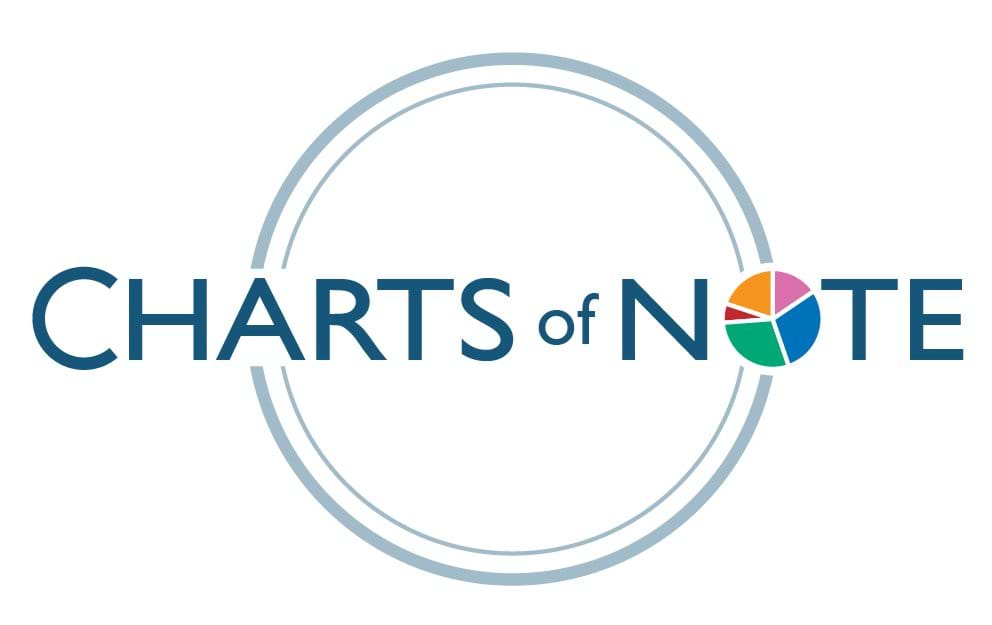ERS Charts of Note
Subscribe to get highlights from our current and past research, Monday through Friday, or see our privacy policy.
Get the latest charts via email, or on our mobile app for  and
and 

Monday, April 15, 2013
U.S. farm households generally receive income from both farm and off-farm activities, and for many, off-farm income largely determines the household’s income tax liability. Since 1980, farm sole proprietors, in the aggregate, have reported negative net farm income for tax purposes, and over the last decade, both the share of farmers reporting losses and the amount of losses reported generally have increased even as farm sector income hits historic highs. In 2010, the latest year for which complete data are available, U.S. Internal Revenue Service data showed that nearly three out of four farm sole proprietors reported a farm loss, for almost $24 billion in losses. The remaining farms reported profits totaling $12.3 billion. Since only about 60 percent of those reporting a farm profit owed any Federal income taxes, only about 19 percent of farm sole proprietors paid any Federal income tax on their farm income in 2010. This chart is found in the February 2013 Amber Waves feature, Federal Income Tax Reform and the Potential Effects on Farm Households.

Tuesday, March 12, 2013
The ability of business owners, including farmers, to deduct the cost of depreciable capital in the year of purchase reduces their tax liability and encourages additional investment. Although the cap is scheduled to drop in 2014, the American Taxpayer Relief Act of 2012 extended provisions allowing depreciable property to be expensed currently, while retroactively raising the 2012 expensing limit. Based on the 2010 Agricultural Resource Management Survey (ARMS), about 18 percent of all farms reported investing more than the prior 2012 expensing limit of $139,000, while just over 1 percent invested more than the revised limit of $500,000. If the expensing limit drops to $25,000 in 2014, as current law provides, large farms would be affected most. Less than 20 percent of small farms (those with less than $250,000 in annual sales) invested more than $25,000 in 2010, while nearly 55 percent of large farms reported capital purchases exceeding that amount. This chart is found in the February 2013 edition of Amber Waves magazine.

Wednesday, February 13, 2013
As a result of the American Taxpayer Relief Act of 2012, the current amount that can be transferred to the next generation free of Federal estate tax is $5.25 million ($10.50 million for a married couple). Based on simulations using farm-level survey data from the 2011 Agricultural Resource Management Survey (ARMS), only about 1.5 percent of farm estates would be required to file an estate tax return, and only about half of these estates or 0.7 percent would owe any Federal estate tax. This chart updates information found in the Federal Tax Issues topic page on the ERS website.
_450px.png?v=1925.3)
Monday, July 9, 2012
The earned income tax credit (EITC) was enacted in 1975 to reduce the burden of Social Security taxes on low-income workers and to encourage them to seek employment rather than welfare benefits. The amount of the credit depends upon the number of qualifying children in the household and the level of earned and adjusted gross income. Originally, the credit was limited to a maximum of $400 per year for a qualifying household, but subsequent legislation expanded the basic credit and provided larger credits for families with two or more children. In 2008, the EITC provided an estimated $51.5 billion to nearly 25 million low-income workers and their families, for an average of $2,063 per recipient. Since rural households have historically had higher poverty rates than urban households, rural taxpayers benefit disproportionately from programs targeting low-income workers, such as the EITC. This chart appeared in "Rural America Benefits from Expanded Use of the Federal Tax Code for Income Support" in the June 2011 issue of ERS's Amber Waves magazine.

Monday, May 16, 2011
The Earned Income Tax Credit (EITC) allows a rebate to the taxpayer of any balance after the credit is applied against the tax owed to the IRS. The impact of the EITC on the rural poor is indicated in part by the geographic distribution and share of tax return filers receiving the credit. The percentage of rural taxpayers who received the EITC in 2007 was greatest in the South, where a large percentage of the Nation's rural poor has historically resided. The median rate of the EITC receipt for Southern States is 21.2 percent of rural households that filed a tax return. This compares with 13 percent of rural households in Northeastern States and 15 percent in the Midwest and the West. These differences reflect higher average income levels in rural areas outside of the South, particularly in the Northeast. This map appeared in the ERS bulletin, Federal Tax Policies and Low-Income Rural Households, EIB-76, May 2011.


